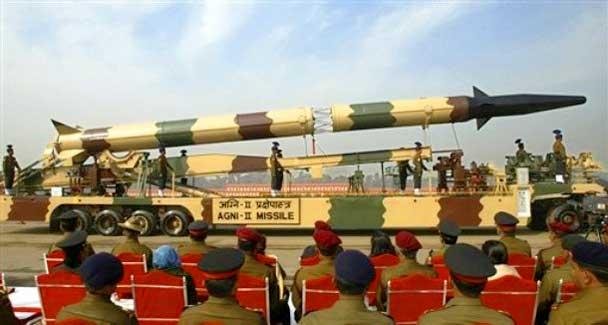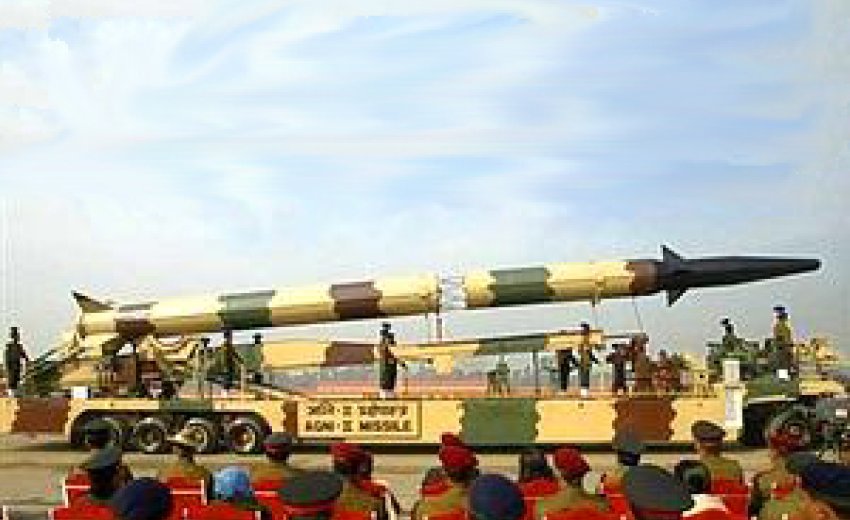The PR story about Obama not wanting to cover his head for fear of being called a Muslim may have some small shred of reality, but consider why Barack Obama is travelling to India in the first place. It's probably not for "cross-cultural purposes" at all. It is unfortunate that he won't be visiting the Harimander Sahib, where his consciousness would surely be raised, but let's not be so naive as to think we should take it personally.
The real reason for the trip is most likely "all about money," the sinking US economy, and the explosion (literal) of of US arms sales abroad, WHERE INDIA WITH ALL ITS NEW FOUND WEALTH IS SPENDING MORE ON WEAPONS THAN ANY COUNTRY IN THE WORLD TODAY. It's about very big business, and "balance of world power," geopolitics, and about containing China militarily.

As India becomes the US largest weapons customer, is it not likely that
at least some "powers that be" in the Indian govt establishment, and
military, might look with disfavor on a visit to Amritsar by the US
president? Think of the history of the past 30 years in Amritsar.
If anti-Sikh Indian politics are in play (and that is, at least,
"possible"), and arms deals worth tens of $billions are at stake for the
US, then cancelling a "cultural visit" to Harimander Sahib is easy to
imagine.
I'm trying to state with any sense of finality "what" is actually going
on. I'm just suggesting that it might be wiser to look realistically at
other explanations and options before calling the US president "gutless"
(for the wrong reasons). In the interests of understanding the real
world we live in, please consider some of the other strong
possibilities, understand more deeply what's at stake in US - India
foreign policy (ugly as this may be) BECAUSE MORE THAN ANYTIME BEFORE,
KHALSA MUST BE WISE AND CLEAR IN GAUGING THE ENTIRE WORLD WE LIVE IN. If
we're walking through a minefield ("mindfield"?) isn't it better not to
be blindfolded, or simply jumping to wrong or naive conclusions. It's a
powerful mystery, and we're all in it.
Just some food for thought,
Krishna Singh
NOTE: Below is a very revealing article that I've condensed to give some more
authoritative background for these suggestions. see: http://www.blogfrommiddleeast.com/?new=69699
India: US Completes Global Military Structure
September 12, 2010
A September 8 report by a leading Canadian newspaper cited the Indian
branch of the Deloitte consulting firm estimating the world's second
most populous nation plans to spend as much as $80 billion for its
defense sector in the next five years. It quoted an Indian journalist,
Rahul Bedi, a contributor to Jane's Defence Weekly, as stating "No one
else is buying like India." [1]
Earlier this year the authoritative Stockholm International Peace
Research Institute (SIPRI) disclosed that India had become the world's
second-largest importer of weapons from 2005-2009, "importing 7% of the
world's arms exports." Only China imported more weaponry, though that
nation is slated to purchase less foreign arms, both aggregate and
percentile, in the coming years and the largest foreign supplier of its
weapons is a non-Western country, Russia.
During the five-year period mentioned above, Indian arms imports more
than doubled from $1.04 billion in 2005 to $2.2 billion in 2009. Over
the past 20 years Russia has been far and away the main provider of arms
to India, as the Soviet Union had been in previous decades, though "The
United States, currently India's sixth-biggest arms supplier, seems
likely to leapfrog to second position once New Delhi starts paying for a
series of recent and ongoing acquisitions." [2]
Those contracts include $1.1 billion for C-130J Super Hercules transport
planes, $2.4 billion for Globemaster airlifters and $2 billion for P-8I
long-range maritime patrol aircraft. (A version of Boeing's Poseidon
reconnaissance and anti-submarine warfare Multimission Maritime Aircraft
modified for Indian use.)
Reports in both the Russian and Chinese press speculate that when US
President Barack Obama visits India in November he "may secure $5
billion worth of arms sales," a deal that "would make the US replace
Russia as India's biggest arms supplier" and "help India curb China's
rise." [3]
The unprecedented weapons transactions could include "Patriot air defence batteries and Boeing mid-air refueling tankers.
"Observers point out that the role of India's biggest arms supplier is shifting from Russia to the United States." [4]
A Chinese news source added that Washington will also supply New Delhi
with howitzers and that "the total cost of the deal may exceed $10
billion…."
The Economic Times of India disclosed in July that "talks are underway
between Indian and US officials over a deal to sell 10 Boeing C-17
[Globemaster III] military transport aircraft to the Indian Air Force
(IAF)."
Wang Mingzhi, a military strategist at the People's Liberation Army Air
Force Command College, warned "once India gets the C-17 transport
aircraft, the mobility of its forces stationed along the border with
China will be improved." [5]
The C-17 carries a payload of 164,900 pounds for 2,400 miles and 100,300 pounds for 4,000 miles without refueling.
In late August the US signed a $170 million deal to supply India with 24
Harpoon Block II advanced air-to-surface anti-ship missiles.
This February the Wall Street Journal revealed that the Obama
administration, with a renewed focus on the Asia-Pacific region, intends
to massively increase arms sales to both India and its nuclear rival
Pakistan. US military sales to Pakistan have risen to $3 billion a year
and are expected to nearly double in 2011.
As for its neighbor, "India is one of the largest buyers of foreign-made
munitions, with a long shopping list which includes warships, fighter
jets, tanks and other weapons. Its defense budget is $30 billion for the
fiscal year ending March 31, a 70% increase from five years ago." [6]
In January US Secretary of Defense Robert Gates visited India and later
in the month Washington secured a deal to sell India 145 US howitzers
for $647 million.
"The Obama administration is trying to persuade New Delhi to buy
American jet fighters instead [of Russian ones], a shift White House
officials say would lead to closer military and political relations
between India and the US It would also be a bonanza for US defense
contractors, and [the White House] has dispatched senior officials such
as Mr. Gates to New Delhi to deliver the message that Washington hopes
India will choose American defense firms for major purchases in the
years ahead."
The Wall Street Journal quoted Tom Captain, vice chairman and Global and
US Aerospace & Defense director at Deloitte headquarters in New
York, as claiming "For 2010 and 2011, India could well be the most
important market in the world for defense contractors looking to make
foreign military sales," where Russian equipment accounts for about 70
percent of that currently in use.
Referring to India's plans to spend $10 billion for 126 multirole combat
aircraft, Captain added: "That's the biggest deal in the world right
now. If it goes to an American firm, that would be the final nail in the
coffin in terms of India shifting its allegiance from Russia to the US"
[7] . . . .
"The visit also coincides with intensified lobbying for the $10 billion
contract for 126 fighters for the Indian Air Force (IAF)." [8]
The White House is negotiating new export control agreements with India
to assist American arms firms to sell more high-technology weapons to
the Asian nation.
At the top of the list of US objectives in expanding military ties with
India are replacing Russia as the country's main arms supplier and the
concomitant supplanting of Russian political influence, further
tightening an Asian NATO around China [9] and weakening the Shanghai
Cooperation Organization [10], all to ensure unimpeded American presence
and domination in Eurasia. . . .
The final frontier is Asia from China to Iran, with those parts of it
not covered by Central Command assigned to US Pacific Command, the
largest overseas military structure in the world. Its area of
responsibility takes in India, China and 60 percent of the population of
the Earth.
An Indian commentary of approximately ten years ago described the US
counter-strategy as a policy of cultivating closer state-to-state
relations with every nation in the world than any of those countries
have with any other state, even their neighbors.
Thus the US is arming India and Pakistan, regional military rivals
possessing nuclear weapons outside the Nuclear Non-Proliferation Treaty
regime, as it is deepening defense ties with other nations on both sides
of local conflicts and disputes. . . .
As the American corporate consultant quoted earlier pointed out, the
best way of transforming the foreign policy orientation of other
countries and subordinating them to Washington's global political agenda
is by penetrating and gaining control over their armed forces. . . .
By supplying arms to those nations and eliminating traditional rivals
for that role, Washington is laying the groundwork for integrating most
every country in the world into its military network. . . .
This July the Reuters news agency reported that US arms sales abroad
could surge from $37.8 billion to $50 billion next year, an increase of
almost one-third.
. . . US arms sales have expanded from $8 billion ten years ago to $37.8
for the fiscal year ending this September 30 "and they are likely to
continue growing in coming years…."
"Among the biggest potential arms deals on the table now are huge
fighter jet competitions in India and Brazil, various modernization
programs for Saudi Arabia, and continuing support for arms sales to
Iraq, Afghanistan, Pakistan and Lebanon."
. . . Nations that had never purchased American weaponry before and that
only had negligible armed forces now offer lucrative prospects for
American arms manufacturers. India is preeminent in the first category.
The recent announcement that the US will supply Saudi Arabia with a
staggering $80 billion worth of arms in the next few years is paralleled
by its plans to become India's main arms provider. . . .
India was elevated to the status of an American strategic military ally,
on the level of a NATO partner, on June 28, 2005 when US Secretary of
Defense Donald Rumsfeld and Indian Defence Minister Pranab Mukherjee
signed the New Framework for the US-India Defense Relationship, in
effect a ten-year defense pact. . . .
India has become the convergence point for the US-led NATO bloc moving
from the west into Central and South Asia and the expansion of an
Asia-Pacific NATO. . . .
India is also intended as a central locus for the US global interceptor
missile grid based on land and sea and in the air and space, linking
deployments in Eastern Europe, the Eastern Mediterranean, the South
Caucasus and the Middle East to those in Japan, South Korea, Taiwan,
Australia and Alaska, including the latter's Aleutian Islands.
Moving the Asian giant [India] into the Pentagon's column will not only
affect the balance of forces in Asia but throughout the world.

